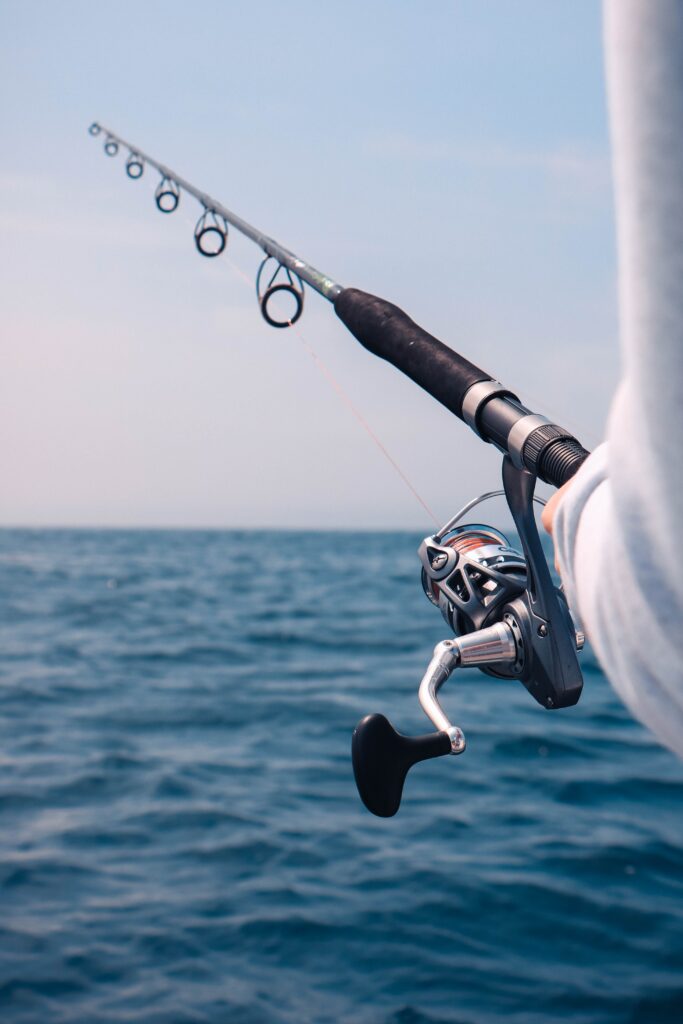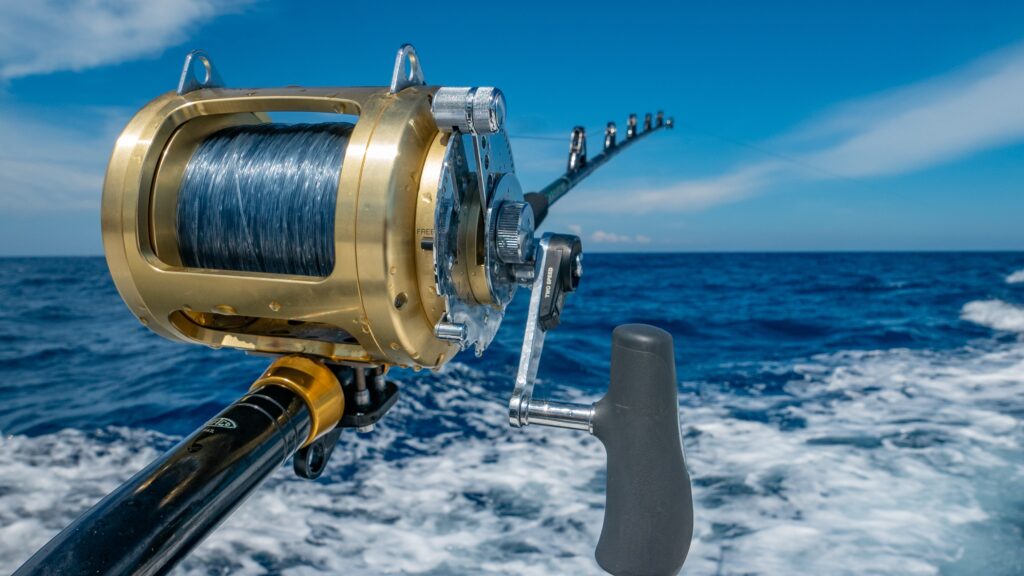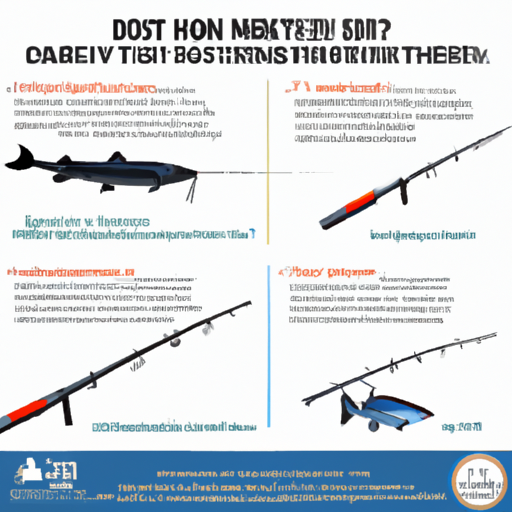When it comes to fishing, having the right fishing rod length can make all the difference in your success. With countless options to choose from, it’s important to understand the factors that contribute to choosing the ideal rod length for your needs. From the type of fish you’re targeting to the fishing technique you prefer, this article will provide practical recommendations to help you select the perfect fishing rod length that will enhance your fishing experience.

Factors to Consider
Choosing the right fishing rod length is an important decision that can greatly impact your fishing experience. There are several factors to consider when determining the appropriate length for your fishing rod. Let’s explore these factors in detail.
1. Type of Fishing
The type of fishing you plan on doing is a key factor in determining the ideal rod length. Different fishing techniques require different rod lengths to achieve optimal performance. Whether you are planning on freshwater fishing, saltwater fishing, or even ice fishing, the type of fishing will influence your choice of rod length.
2. Target Species
The species of fish you are targeting will also play a role in selecting the right rod length. Different species behave differently and have varying sizes, so it’s important to choose a rod length that matches the size and behavior of your target species. For example, if you’re targeting small panfish, a shorter rod may be sufficient. On the other hand, if you’re going after larger species like musky or catfish, a longer rod will provide more power and control.
3. Fishing Location
The location where you plan on fishing is an important consideration when choosing a rod length. If you’re fishing in tight spaces with overhanging trees or dense vegetation, a shorter rod can help you maneuver and cast with ease. On the other hand, if you’re fishing in open waters or from a boat, a longer rod may be more suitable for achieving longer casting distances.
4. Casting Distance
The distance you want to cast is another factor to consider. Longer rods generally allow for greater casting distances, which can be advantageous when fishing in larger bodies of water. However, if you’re fishing in smaller ponds or rivers with limited casting space, a shorter rod may provide more accuracy and control.
5. Fishing Technique
Different fishing techniques require different rod lengths for optimal performance. For example, if you’re using a spinning reel and employing techniques such as finesse fishing or drop-shotting, a medium to medium-long rod would be ideal. On the other hand, if you’re using a baitcasting reel and prefer techniques like flipping or pitching, a shorter, more powerful rod would be more suitable.
Understanding Fishing Rod Lengths
Now that we have explored the various factors to consider, let’s dive deeper into the concept of fishing rod lengths.
2.1 What is Fishing Rod Length
Fishing rod length refers to the measurement of the fishing rod from the butt (handle) to the tip. It is typically measured in feet and inches. Fishing rods come in a variety of lengths, ranging from as short as 4 feet to as long as 14 feet or more. Each length has its own advantages and disadvantages, depending on the fishing technique and conditions.
2.2 The Relationship Between Rod Length and Casting Distance
One of the most significant factors influencing casting distance is the length of the fishing rod. In general, longer rods have a greater potential for casting longer distances. This is because the longer length allows for more leverage and a wider arc during the casting motion, resulting in increased casting distance. However, it’s important to note that casting distance is not solely determined by rod length. Factors such as rod action, reel type, line weight, and casting technique also play a role.

Different Lengths for Different Fishing Styles
Different fishing styles require different rod lengths to accommodate the techniques and conditions associated with each style. Let’s take a closer look at the recommended lengths for some popular fishing styles.
3.1 Spinning Rods
Spinning rods are versatile and commonly used for various fishing styles. These rods typically range from 6 to 8 feet in length. A shorter spinning rod, around 6 feet, is ideal for finesse fishing, such as targeting small panfish or making precise casts in tight spaces. A longer spinning rod, around 7 to 8 feet, provides better leverage and casting distance, making it suitable for techniques like casting lures or fishing in open waters.
3.2 Casting Rods
Casting rods, also known as baitcasting rods, are popular among anglers who prefer techniques like flipping, pitching, or targeting larger species. These rods are typically shorter in length, ranging from 6 to 7.5 feet. The shorter length allows for better control and accuracy when making precise casts into heavy cover or structures.
3.3 Fly Rods
Fly fishing requires a specific type of rod known as a fly rod. Fly rods are typically longer than spinning or casting rods and range from 7.5 to 10 feet or more. The longer length of fly rods allows for better line control and casting accuracy, which are crucial in fly fishing. The specific length of a fly rod will depend on the fishing conditions, target species, and the angler’s personal preference.
Recommendations for Fishing Rod Lengths
Based on the factors and different fishing styles we’ve discussed, here are some general recommendations for fishing rod lengths:
4.1 Short Rods (around 6 feet or less)
Short rods are well-suited for finesse fishing techniques and fishing in tight spaces. They offer better maneuverability and control when making precise casts or working lures in dense vegetation or structure. If you enjoy panfishing, dock fishing, or need a compact rod for travel, a shorter rod would be a good choice.
4.2 Medium Rods (between 6 and 7.5 feet)
Medium-length rods are versatile and can accommodate a wide range of fishing techniques. They offer a good balance between casting distance and control. These rods are suitable for techniques like casting lures, fishing from shorelines, or even trolling from a boat.
4.3 Long Rods (7.5 feet or more)
Long rods are favored by anglers who prioritize casting distance and line control. They are ideal for open water fishing, surf fishing, or situations where longer casting distances are required. These rods provide more power and leverage, making them suitable for targeting larger species or fishing in challenging conditions.

Matching Rod Length with Fishing Technique
Now that we have explored different fishing techniques and the recommended rod lengths, let’s match each fishing technique with its suitable rod length.
5.1 Fishing Techniques for Short Rods
Short rods, around 6 feet or less, excel in finesse fishing techniques such as drop-shotting, jigging, or fishing with light tackle. Their shorter length provides better control and finesse, allowing for precise presentations and subtle bait movements. Furthermore, short rods are advantageous when fishing in tight spaces, such as small ponds or narrow streams.
5.2 Fishing Techniques for Medium Rods
Medium-length rods, ranging from 6 to 7.5 feet, are suitable for a wide range of fishing techniques. They can be used for casting lures, bait fishing, or even trolling. Medium rods offer a balance of casting distance and control, making them versatile for various fishing scenarios.
5.3 Fishing Techniques for Long Rods
Long rods, 7.5 feet or more, are preferred for techniques that require long casting distances and better line control. Techniques such as surf fishing, fishing from a boat, or targeting larger species can benefit from the extra power and leverage provided by longer rods. These rods allow you to reach farther distances and handle heavier lines and lures with ease.
Additional Considerations
Apart from the factors mentioned above, there are a few additional considerations to keep in mind when choosing the right fishing rod length.
6.1 Personal Preference
At the end of the day, personal preference plays a significant role in selecting a fishing rod length. Some anglers may feel more comfortable and confident with a specific length, even if it doesn’t align precisely with the recommended lengths. It’s important to choose a rod length that feels comfortable in your hands and suits your fishing style.
6.2 Transportability
If you plan on traveling or hiking to fishing spots, the portability of your fishing rod becomes a crucial consideration. Longer rods may be challenging to transport, especially if you’re limited by carrying space or have to navigate through dense vegetation. Consider the ease of transport when selecting a rod length.
6.3 Budget Constraints
Budget is always a consideration when purchasing fishing gear. Longer rods often come with a higher price tag due to the materials and construction required. It’s important to find a balance between your budget and the desired rod length. Remember, there are options available in various price ranges, so it’s possible to find a rod that suits both your needs and budget.

Conclusion
Choosing the right fishing rod length is essential for enjoying a successful and comfortable fishing experience. By considering factors such as the type of fishing, target species, fishing location, casting distance, and fishing technique, you can determine the ideal length for your fishing rod. Whether you opt for a short, medium, or long rod, it’s important to match the rod length with your fishing style and preferences. Additionally, taking into account transportability and budget constraints will further help you narrow down your options. Remember, the right rod length will enhance your performance and enjoyment on the water, so choose wisely!
Glossary
Here are some key terms to help you better understand fishing rod lengths:
- Fishing Rod Length: The measurement of the fishing rod from the butt to the tip.
- Casting Distance: The distance a fishing lure or bait can be cast using a fishing rod.
- Spinning Rod: A type of fishing rod designed for use with a spinning reel.
- Casting Rod: Another term for a baitcasting rod, which is designed for use with a baitcasting reel.
- Fly Rod: A specialized fishing rod designed for fly fishing, typically longer in length.
- Finesse Fishing: A fishing technique that involves using very subtle movements and presentations to entice fish to bite.
- Drop-Shotting: A finesse fishing technique that involves suspending a bait or lure above the bottom using a weight.
- Jigging: A fishing technique that involves using a weighted lure or bait that is jerked or twitched to attract fish.
- Surf Fishing: Fishing from the shoreline, typically in ocean or coastal areas.
- Trolling: A fishing technique that involves slowly dragging lures or bait behind a moving boat.






